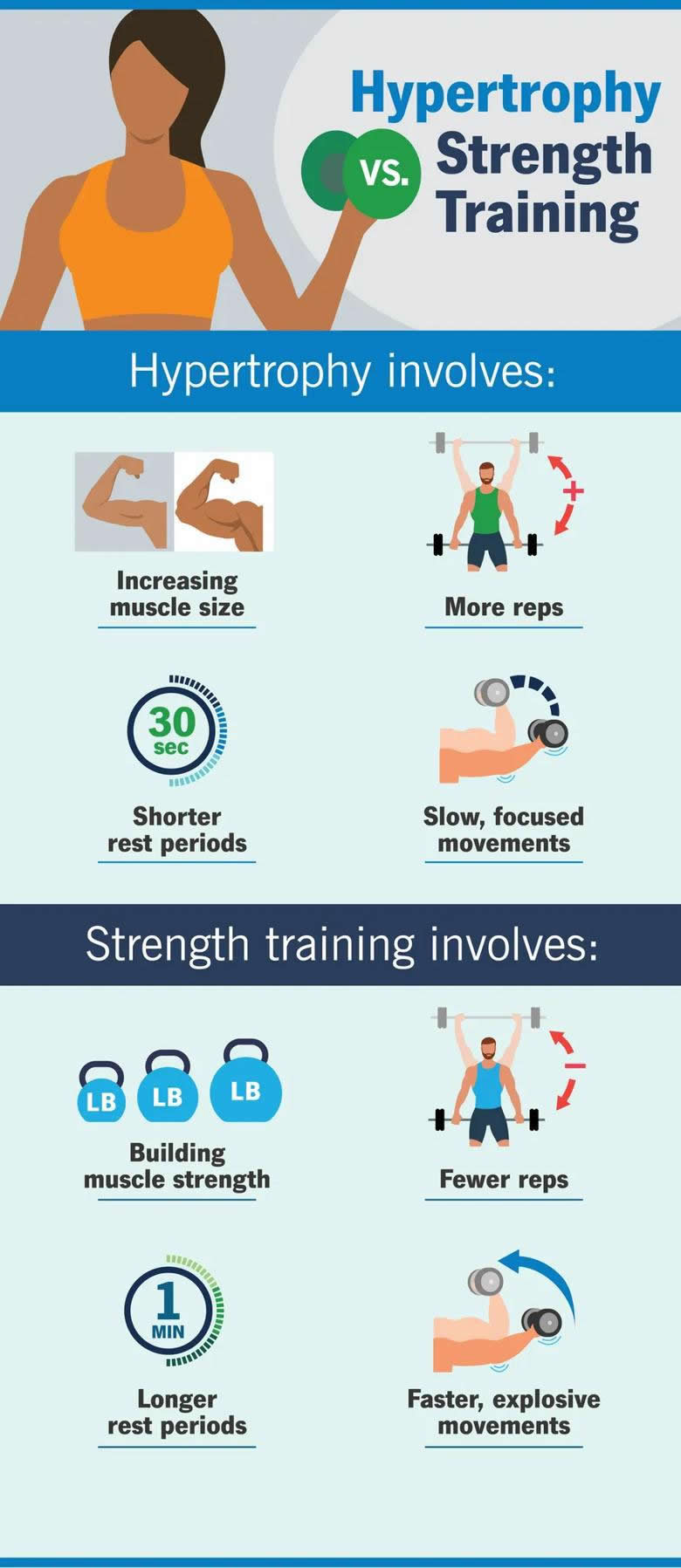A How-To Guide on Muscle Hypertrophy
Increase the size of your muscles by bulking up on protein and focusing on slow, intense movements with progressive overloading

Building bigger muscles takes time and dedication. And factors like your family history, genes and overall health can affect your muscle growth. So, if you’re just getting started, it can feel daunting trying to reach a bodybuilder physique.
But sports medicine physician Dominic King, DO, says it’s possible to reach hypertrophy if you’re committed to trying various forms of training workouts and nutrition.
What is hypertrophy?
Muscle hypertrophy is defined as an increase in muscle mass and a thickening of muscle fibers. You can build larger muscles through a combination of:
- Weightlifting
- Strength training
- Progressive overloading
- Hydration
- Eating a healthy, well-rounded diet
As you slowly increase the weight, intensity, resistance or duration of your training over time, your muscles learn how to grow, get stronger and deal with more stress. Essentially, muscular hypertrophy is all about building larger muscles.
How do diet and nutrition affect muscle hypertrophy?
In order to increase muscle growth, your muscles need more energy and fuel. Staying hydrated helps with muscle recovery, while protein helps your muscles rebuild and expand. Both are important for muscle hypertrophy.
“You want to get about 1.6 to 2.2 grams of protein per kilogram of body weight per day,” says Dr. King. “If you’re trying to maximize muscle growth and repair, you typically want to spread that out over three to five meals or snacks throughout the day.”
So, if you’re trying to achieve muscular hypertrophy and weigh 200 pounds, you should eat a minimum of 145 grams of protein every day to build more muscle. But that doesn’t mean you should bulk up on protein powders and supplements. Instead, aim for lean steaks, chicken and other whole foods rich in protein.
Benefits of muscle hypertrophy training
Hypertrophy training makes your muscles look and feel larger. That alone can be seen as a great benefit. But you also get:
- Increased strength
- Faster metabolism, even when you’re resting
- Higher energy levels
- Better joint stability
- Straighter posture
- Improved mobility
- Enhanced performance
“Some people achieve hypertrophy for aesthetics,” notes Dr. King. “But a vast majority of people want bigger muscles because they want to feel stronger so they can do everyday things. They want to be able to pick up their children, get up off the floor or get out of bed without difficulty.”
Hypertrophy training workout
Beginners interested in muscle hypertrophy can start with these exercises:
- Bicep curls
- Tricep curls
- Lateral pull-downs
- Quad extensions
- Hamstring curls
- Calf raises
But before diving into any of these, you’ll want to identify your one-rep max — that’s the most weight you can safely lift during a single, complete repetition without losing proper form.
“To reach hypertrophy, you want to lift between 60% and 80% of your one-rep max,” Dr. King explains. “It’s best to work with a physical therapist or athletic trainer, who can help you figure out your one-rep max for a more direct, individual approach to hypertrophy.”
Your hypertrophy workout should combine:
- Five to six different upper and lower body exercises
- Three sets of six to 15 reps per exercise
- Weights that equal 60% to 80% of your one-rep max
- Proper form during each exercise
- A slow, controlled tempo when lengthening and contracting muscles
“When you’re trying to hypertrophy muscles, you want to emphasize controlled contractions,” says Dr. King. “You should move with a slow, even tempo when lifting and putting down weights.”
Hypertrophy vs. strength training

Hypertrophy is specifically focused on the physical size of your muscles. Strength training doesn’t always lead to significant muscle growth, but it can help you get stronger and maintain the muscle you already have. You just won’t look like the Hulk by the end of it.
Hypertrophy involves:
- Increasing muscle size
- More repetitions
- Shorter rest periods
- Slow, focused movements
Strength training involves:
- Building muscle strength
- Fewer repetitions
- Longer rest periods
- Faster, explosive movements
“Strength training helps you build enough muscle to stabilize your joints and stay fit for everyday activities,” says Dr. King. “Your muscles will become more defined, but they won’t bulk up significantly unless you’re specifically training for hypertrophy.”